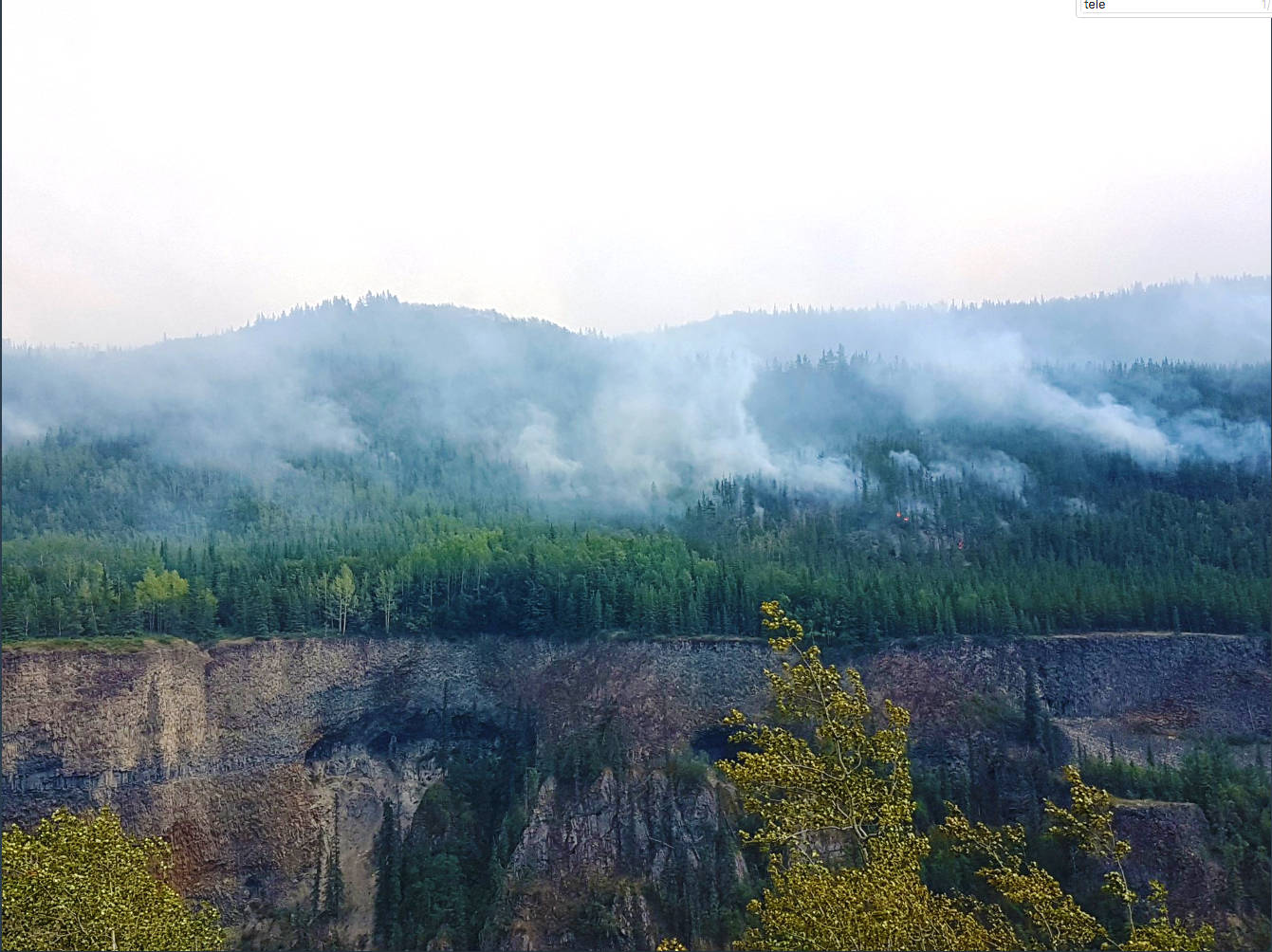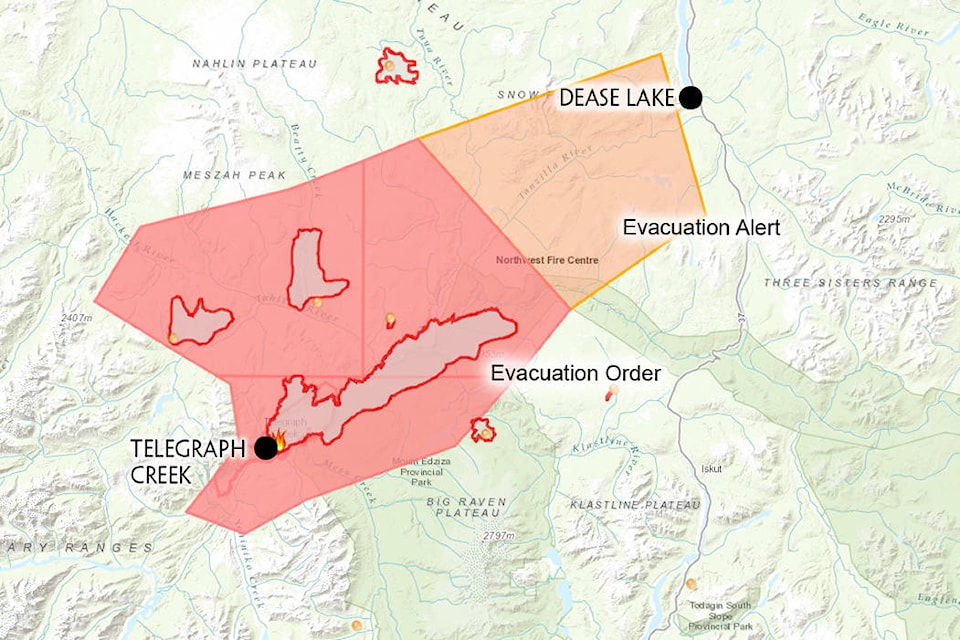Most of the wildfire activity around Telegraph Creek is now located across the Stikine River, mitigating further risk to village infrastructure, according to the BC Wildfire Centre.
“There are definitely some hot spots around the community and the crews are jumping on them fairly quickly. The other hotspots are across the river in the park, which are harder to get to due to the steep terrain. It’s difficult to get equipment in there,” said information officer, Amy Riebe.
As of today the Alkali Lake wildfire burn area was an estimated 33,150 hectares in size.
READ MORE: B.C. Wildfires 2018: Province calls for federal aid
An Australian Incident Management Team has arrived in Dease Lake to assume oversight of the firefighting effort.
As conditions allow crews are focusing on the burning of green spaces today and building fireguards and breaks around Telegraph Creek and infrastructure.
“Around the community, the biggest danger at the moment, apart from those few hotspots, is definitely the danger trees…where the trees or the roots themselves have become unstable — anything that could pose a risk to people or property,” Riebe said.
“Crews are progressively making their way through to assess the risk. I went through there yesterday and there are a lot of trees that could fall down. So that’s one of the big inhibitors of letting people go back.”
Riebe added a large amount of heavy equipment clearing and repairing the highway also poses a safety risk.
READ MORE: A look at B.C. wildfire smoke from space
A total of 193 personnel are now dedicated to the fire. The personnel consist of Canadian, Australian and New Zealand firefighters with a Mexican team also on its way. The effort breaks down to 157 firefighters, 13 helicopters and 21 pieces of heavy equipment.
The State of Emergency for the Telegraph Creek area was extended another week until Aug. 17 at 11 a.m. unless cancelled. The Regional District of Kitimat Stikine’s declaration allows for the evacuation orders in Telegraph Creek, and evacuation alert stretching northwest toward Dease Lake, to remain in place.
BC Hydro has restored power to most areas of Telegraph Creek. Personnel are now attempting to restore power to the Sawmill Lake area.
Now in its second week, the Alkali Lake merged with the South Stikine River wildfire Aug. 8. The volatile weather systems created by the fires had pulled the blazes toward one another into what is now one of the province’s largest wildfires in one of the worst seasons on record.
READ MORE: B.C. shows outpouring of support for Telegraph Creek
Last Friday BCWF incident commander Hugh Murdoch told a crowd gathered at an Iskut community meeting the fire had been too volatile to focus on anything but the interface.
“The amount of water it would take to deliver through the hoses to put these fires out, it’s impossible to deliver that volume of water,” he said. “Air support efforts have been focused instead on the interface, homes and businesses, bridges, cell towers and culturally sensitive areas.”

